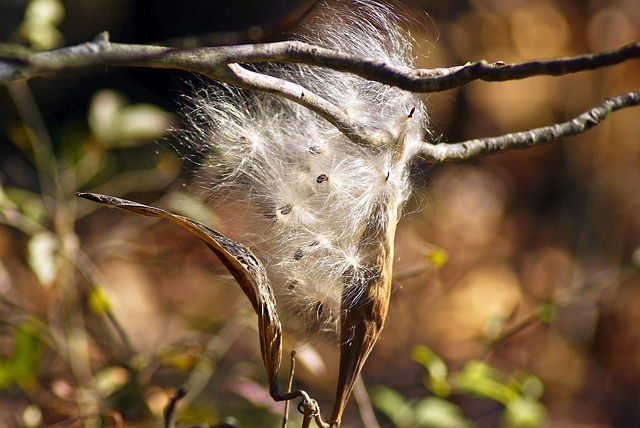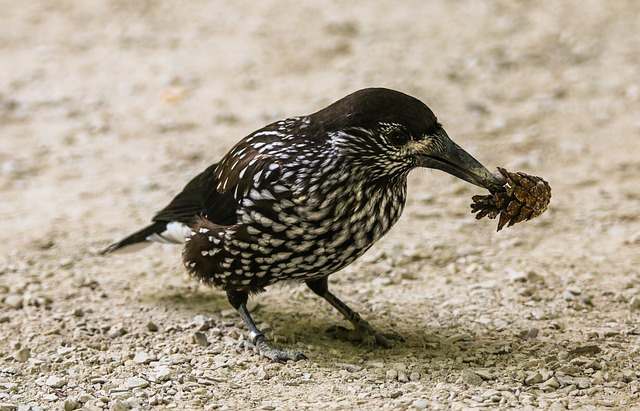Why is Seed Dispersal Important?
When flowering is over and the fruits and seeds ripen, they fall from the parent plant to the ground.
The number of seeds produced by a single plant is often very large.
However, most of them perish; some are eaten by animals, while others may fall on the ground already occupied or unfavorable to the particular plant.
If conditions are favorable, the seeds germinate and grow.
If the seedlings develop close to the parent plant, they soon become overcrowded.
They compete among themselves and with the parent and other plants for light, water, mineral salt, and other essential soil constituents so that only the strongest seedlings finally survive.
To overcome such difficulties, the fruits and seeds of most plants are variously adapted so that they can be scattered far away from the parent,
This will ensure the wide distribution of the seeds and the survival of a good number of seedlings under favorable conditions.
What is Fruit and Seed Dispersal
Fruit and seed dispersal is a process whereby fruits or seeds are moved from the parent plant to a near or far location.
The importance of the dispersal of seeds is that it helps the plant to spread around a location and grow.
Another advantage of seed dispersal is that It helps to cover barren pieces of land with vegetation.
Seed dispersal can reduce the stress of the farmer in preserving seeds and planting annual crops in the following year.
It can also help to increase yield and productivity naturally.
How Does Seed Dispersal Work
There are five types of seed dispersal, which are also agents of fruit and seed dispersal.
The common agents that bring about dispersal are wind, water, animals, explosive mechanisms within the fruits themselves, and man.
The three common methods of fruit and seed dispersal are Wind, Animals, and explosive mechanisms but I’ll discuss all the methods.
- Wind Dispersal
Fruits and seeds are commonly dispersed by wind.
Characteristics of seeds dispersed by wind are wings and hairs which enable them to float easily and allow them to be carried around by the wind.
I’ve covered the types of wind dispersal methods and nature in our previous article.
You can read more about the wind dispersal method here.
- Water Dispersal
Fruits and seeds are dispersed by rainfall and water flow
Examples of seeds dispersed by water are coconut and water lotus.
Fruits and seeds dispersed by water have common characteristics which are spongy or fibrous coats that enclose large air chambers.
The trapped air allows them to float for considerable distances.
In the case of the coconut, the fibrous mesocarp encloses air which makes the fruit buoyant enough to float in water.
The water lily has a fruit that swells until the outer covering bursts, freeing seeds into water.
Each seed contains bubbles of air that allow it to float away from the parent.
Finally, the bubbles of air disappear and the seed sinks to the bottom where, after a period of rest, it germinates.
All fruits and seeds dispersed by water have waterproof coats that prevent water from entering for some time.
- Dispersal by Explosive Mechanisms
Seed dispersal by an explosion of fruit is common.
The legumes of many bean plants ( for example Acacia and Caesalpinia) burst open when ripe.
This is because of the drying up of the pericarp which causes contraction and splitting.
The legume splits into two valves and the seeds are ejected with force.
in many cases ( for example Acacia) each valve curls tightly.
This helps the seeds to be thrown out. The balsam fruit, when ripe, swells and bursts at the slightest touch.
The pressure setup is so great that each segment of the pericarp curls inwards.
The seeds are scattered some distance away from the parent plant.
- Animal Dispersal
Birds and mammals, including Man, help in the dispersal of some fruits and seeds.
Fleshy, brightly colored fruits are specially adapted for dispersal by animals.
Examples of fruits dispersed by animals are mango, pawpaw, orange, guava, etc.
They may be eaten by men, birds, bats, Monkeys, Squirrels, or other animals.
The hard seeds are thrown away or swallowed. In the alimentary canal, they can remain undigested because each seed is either covered by a slimy, impermeable layer or has a tough woody seed coat.
The seeds are then passed out unharmed in the feces.
As birds usually cover great distances during flight, these seeds get deposited in several places.
they may fall to the ground or in between branches of large trees and begin to germinate.
Animals may also wander over great distances, dispersing seeds as they do so.
Some seeds are very sticky ( for example, those of mistletoe) and adhere easily to the beaks of birds that eat fruits.
These boards may clean their beaks on the trunks of trees, and leave the seeds there. The seeds soon germinate.
Fruits and seeds with hooks (for example Mimosa and Urena) or hairs (for example love-grass and spear grass) can be caught in the fur of animals such as dogs, cats, and cattle, or on the clothing of people.
Consequently, they may be dropped at distances away from the parent plant.
Some fruits are covered with sticky, glandular hairs ( for example hogweed and Plumbago) which enable them to stick to the skin of animals and get dispersed by them.
Other fruits ( for example Tribulus) have sharp, rigid spines using which they are trapped in the hooves of animals, or between the digits of their feet.
- Dispersal by Man
Man plays an important part in fruit and seed dispersal.
The original home of rubber was South America, but today rubber flourishes in Malaysia and Indonesia.
This is because Man introduced it into these regions.
Other economically important plants such as Cereals and fruit trees have been taken from their original countries and grown in other countries.
Sometimes, weeds are accidentally introduced with important crop plants.

